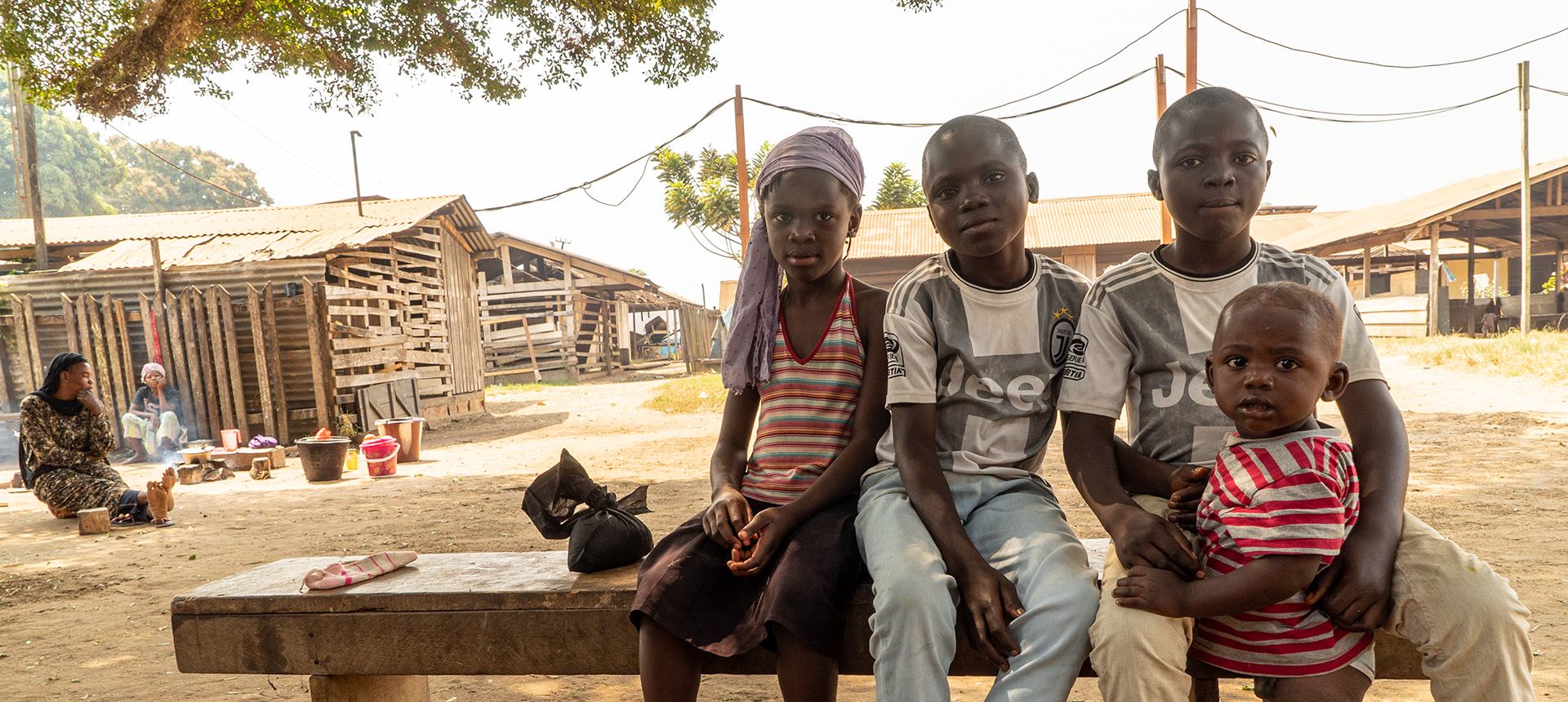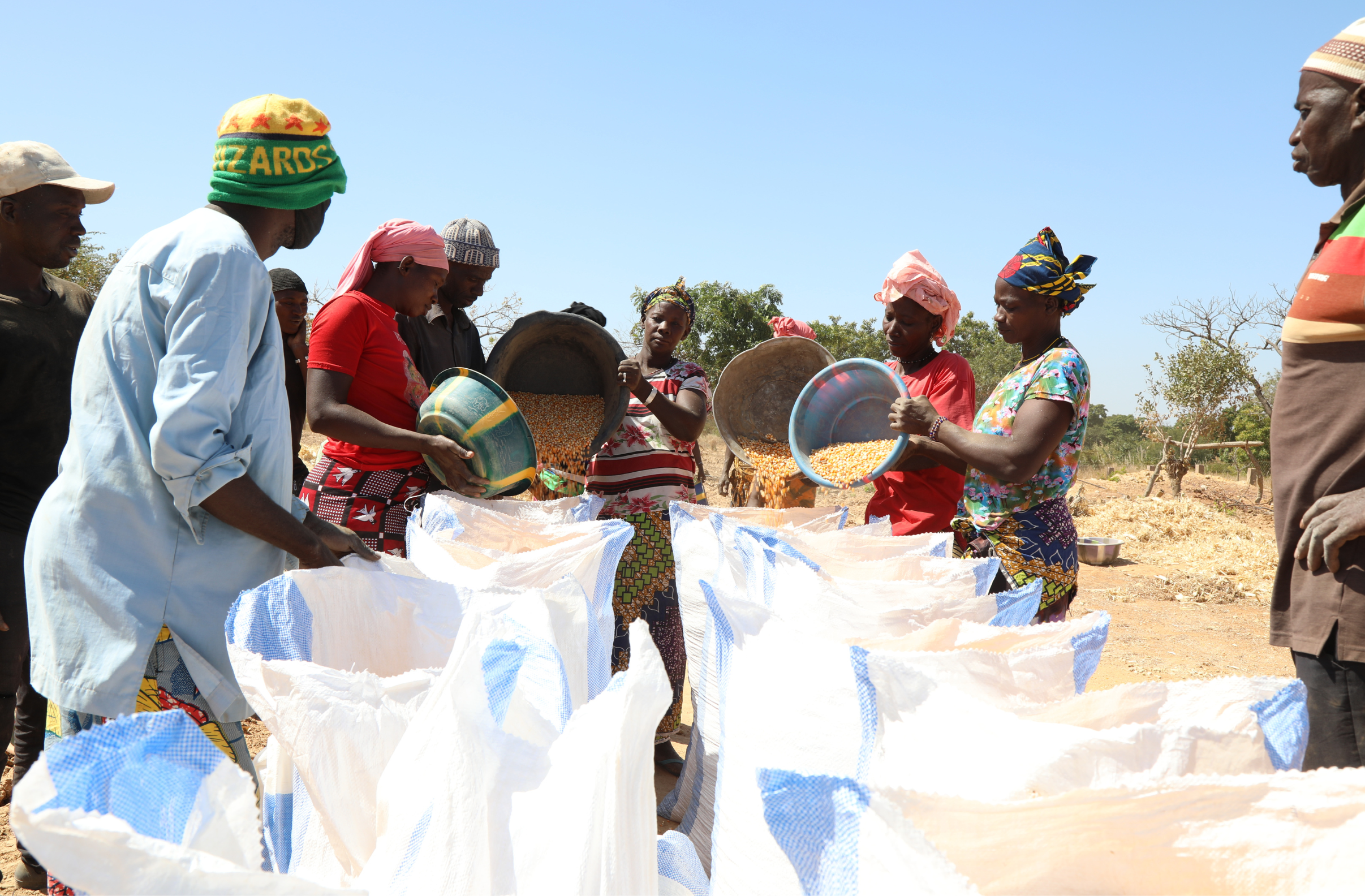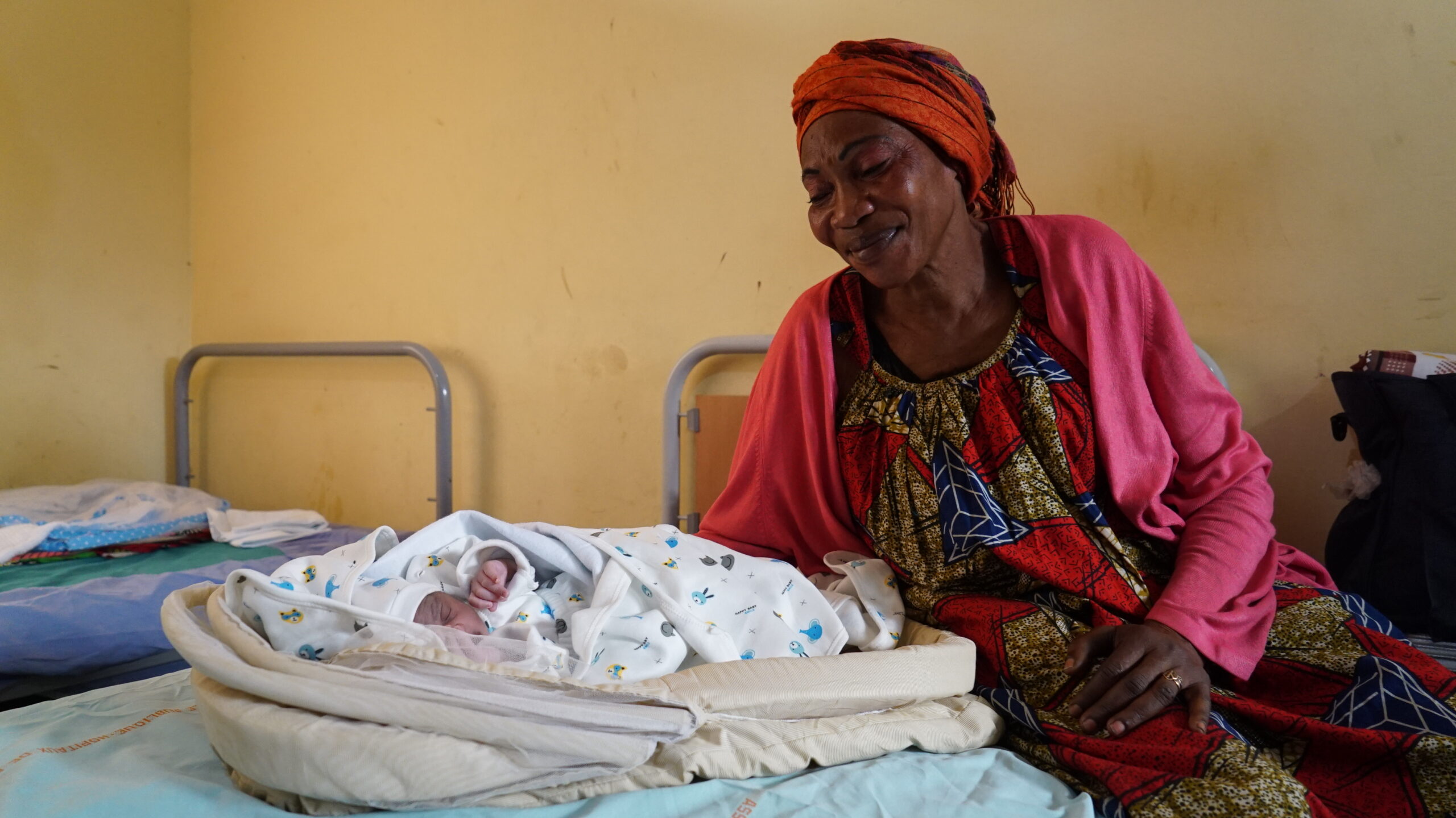

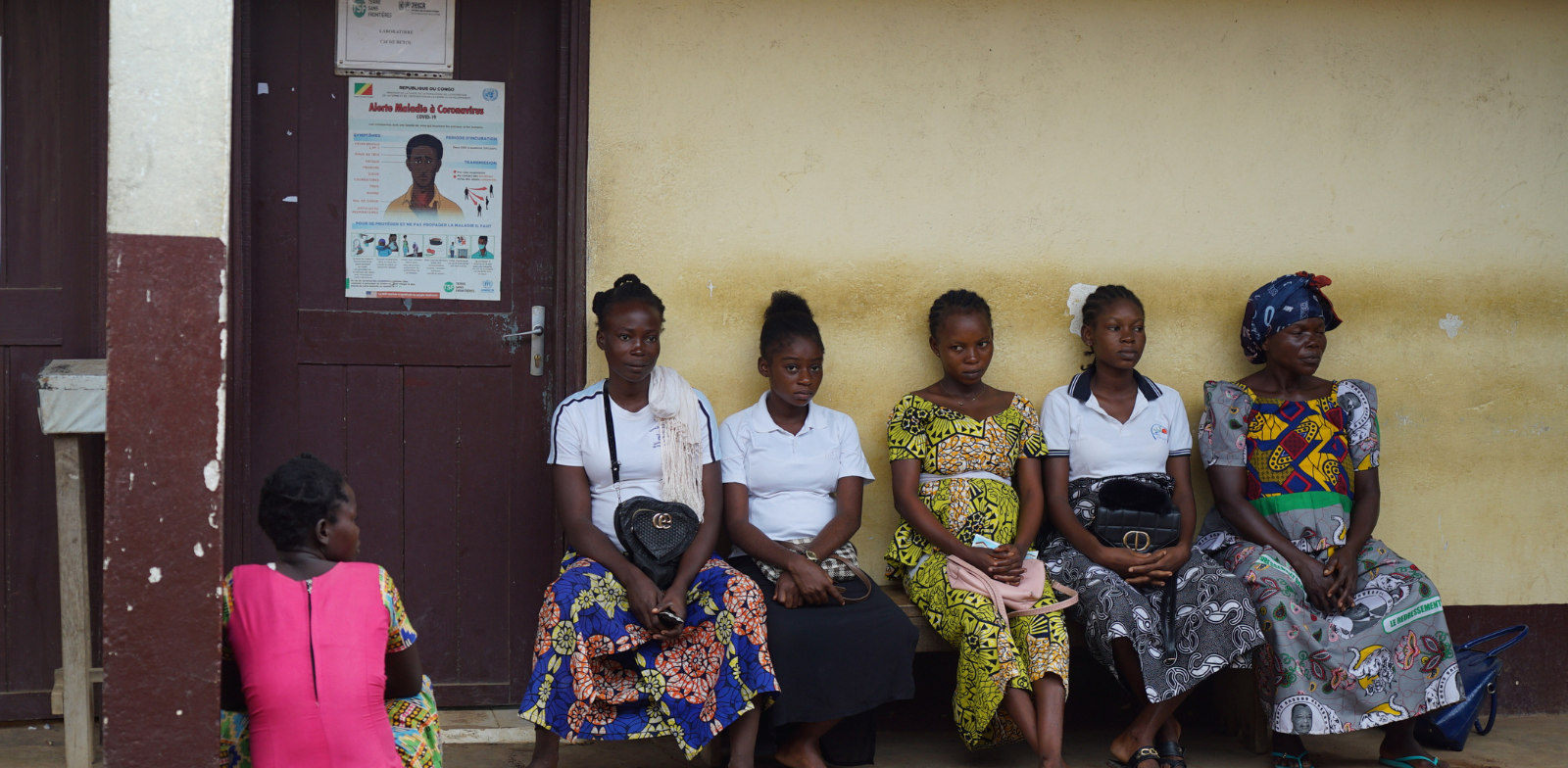
The TSF team spoke to three doctors from the Republic of Congo: Dr Dodoua Ray, Dr Michel Wonya – both project managers for TSF – and Dr Grace Mabiala – who worked for TSF from 2019 to 2022 in our projects in Bétou as a clinical doctor.
A reality with several layers of difficulties
In the north of the Republic of Congo there are villages far from the big cities, where the quality of life is affected by various factors. Distance, means of transport, climate change and sources of income all play an important role in the health of the local population.
Likouala, the northernmost territory in the country, is one of the ‘most remote [and where] there is precariousness. Most of the refugees in Congo, over 80%, [come] from the Central African Republic and the Democratic Republic of Congo. A large proportion are based [there], so this adds to an already existing problem.’
With agriculture and fishing as the main sources of income, there is no guarantee that there will always be good harvests. ‘It’s a seasonal activity. It’s not all the time. There are times when you can’t find fish, and when you can’t find fish, you go hungry,’ explains Dr Dodou Ray.
He adds that a bad season inevitably affects access to healthcare.
‘There are a lot of private practices because the hospital infrastructure as such cannot meet the needs of the population. People prefer to go into private practice, and to do that you need money. And if you can’t sell your fish, you can’t get access to these practices.’
When it is possible to access care, the lack of specific equipment is another obstacle to a proper diagnosis. As Dr Grace explains, ‘even in the hospitals that are there, there is still some care that is limited. In Bétou, there was no ultrasound machine before Terre Sans Frontières.’
‘There are problems that occur during pregnancy, such as placenta previa and retroplacental haemorrhage. But these are ultrasound diagnoses. So if you don’t have an ultrasound scan, you won’t know until the woman gives birth, and that’s usually irrevocable. Afterwards, we are forced to perform a caesarean section that could have been avoided,’ explains Dr Michel Wonya.
Unfortunately, the health centres that have the necessary equipment are far away, and it’s not always possible to refer people there. ‘In terms of distance, it’s very remote and if there’s an absolute emergency you can’t travel 200 kilometres to find a solution.
Those 200 kilometres, travelled in motorised pirogues on waterways, can be fatal.
‘If a woman wants to give birth and the delivery is dystopian, i.e. she cannot give birth vaginally, a caesarean section must be performed. We have to put that woman in a motorised pirogue to take her to Gamboma. It’s a five-hour journey to be able to do the Caesarean section. In terms of risks for mother and child, it’s very high,’ explains Dr Ray.
This reality becomes even more critical when floods – which used to be cyclical and have been completely turned upside down with climate change – overwhelm the region.
‘When there’s a flood, all these places are under water. What we fear during this period are diseases, such as cholera and vector-borne diseases, because everything sanitary is poured into the water, the same water that people consume until it recedes.’

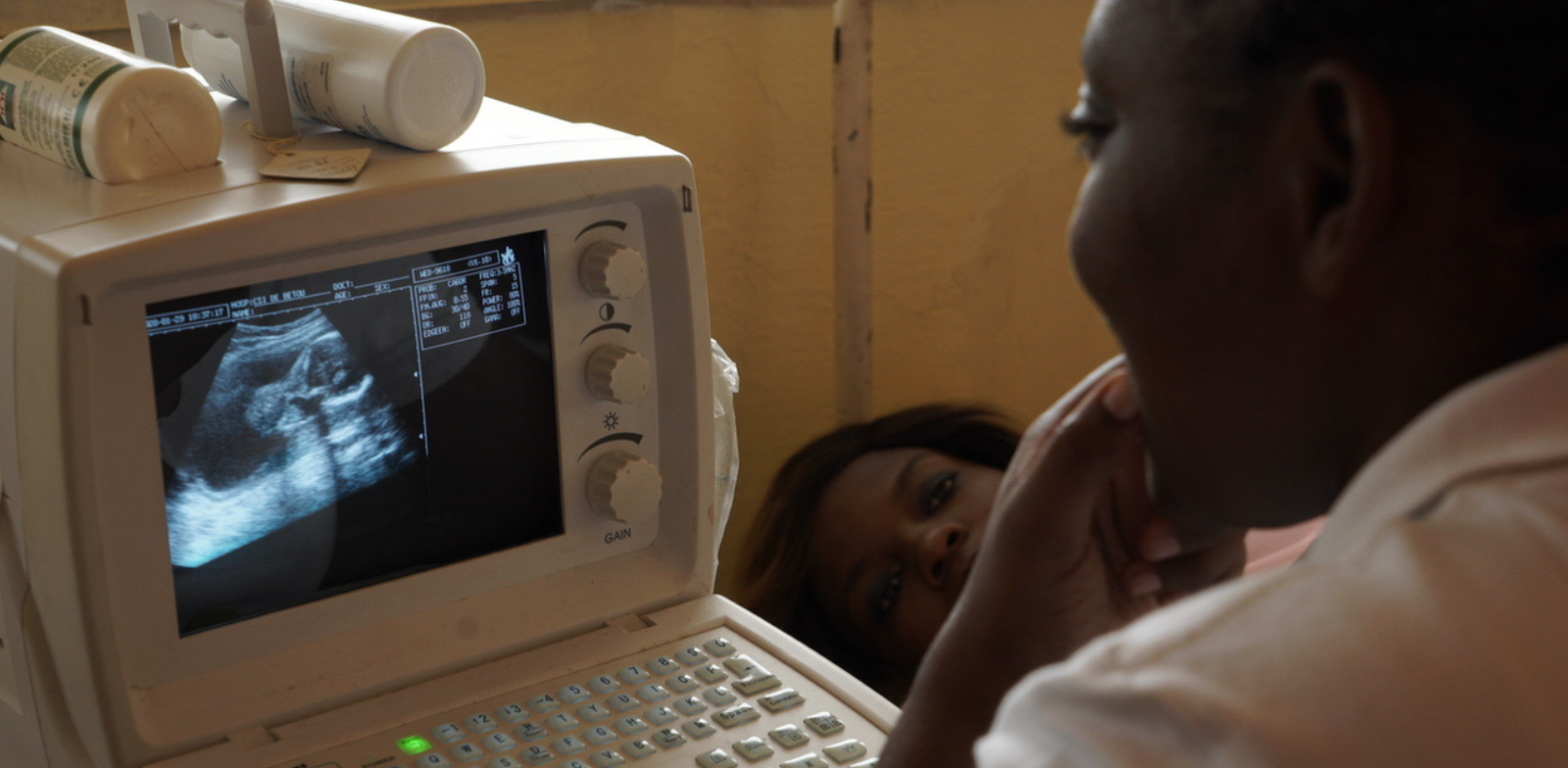
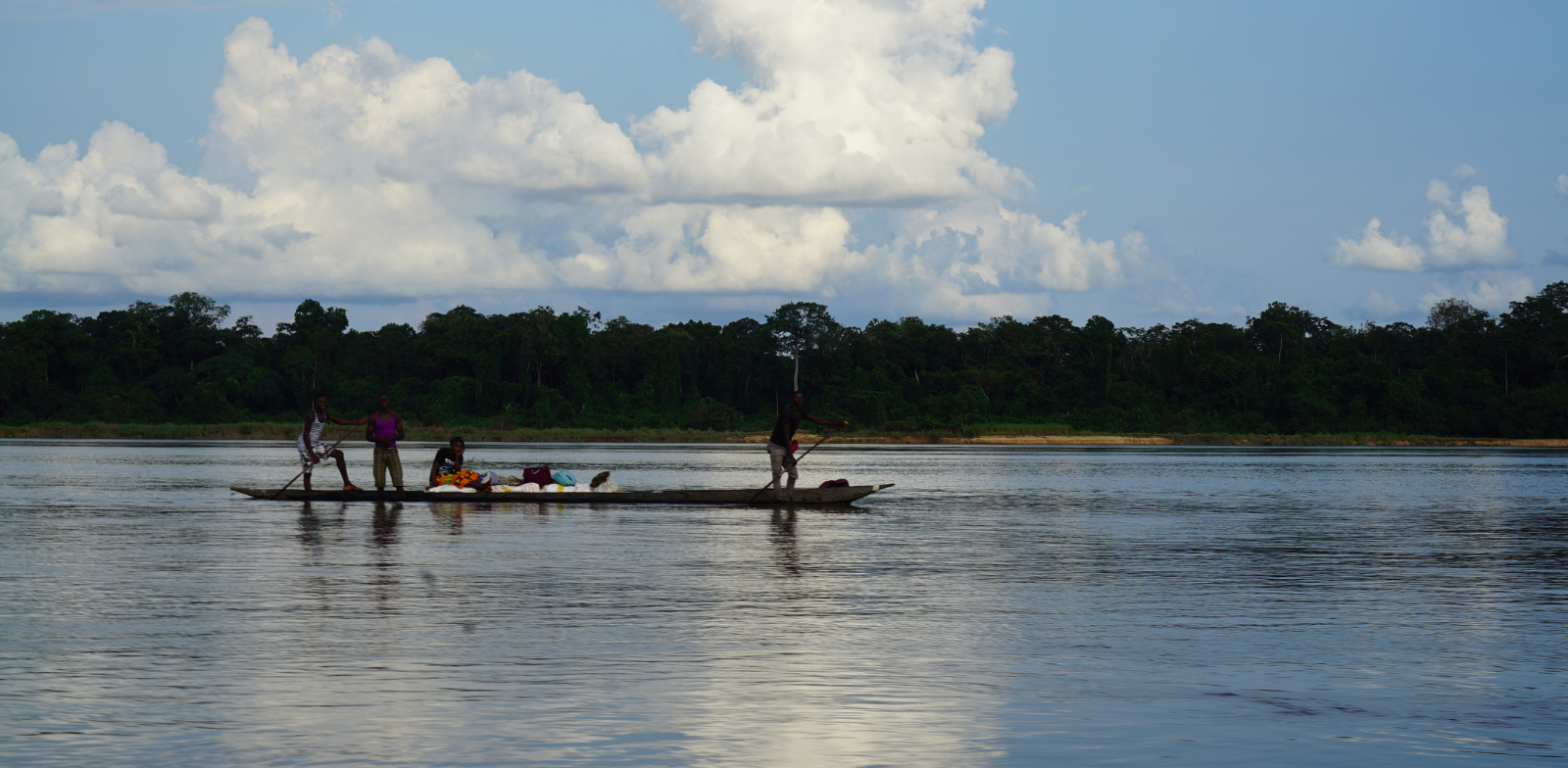
A day in the life of a TSF doctor
Doctors Ray and Wonya, project managers at TSF, are responsible for planning and coordinating the activities carried out by their teams in the field.
The conditions are sometimes difficult and must be taken into account. ‘Many people have been displaced and infrastructure destroyed. These are missions that [take place] on land and also on the waterways.’
Sometimes, the staff have to go ‘to areas completely under water where health workers have difficulty reaching them, and where the majority of children have not been vaccinated’.
A difficult journey that is compounded by work that is sometimes carried out without water or electricity. It’s a reality that Dr Ray, originally from the Central African Republic, immediately understood on his first day as a doctor in the field with TSF.
‘I was in the field for the first time. I was expecting to find myself in an environment where I had everything I needed. In other words, the [working] conditions. But when I got there, I found myself in an environment where I couldn’t see the person next to me. [It was] dark. There was no water.’
‘On my first day of work I had a baptism of 100 patients that I saw from 8am to 9pm. It really made an impression on me. That’s when I realised that the problem isn’t in the capital. The problem is really in the remote areas.’
Today, Dr Ray and Dr Wonya travel to the field to monitor and evaluate our actions to ensure that the projects are running smoothly.
Evaluating projects is essential, because ‘if there is no impact at the time, it’s as if we haven’t used the money properly,’ add the doctors.
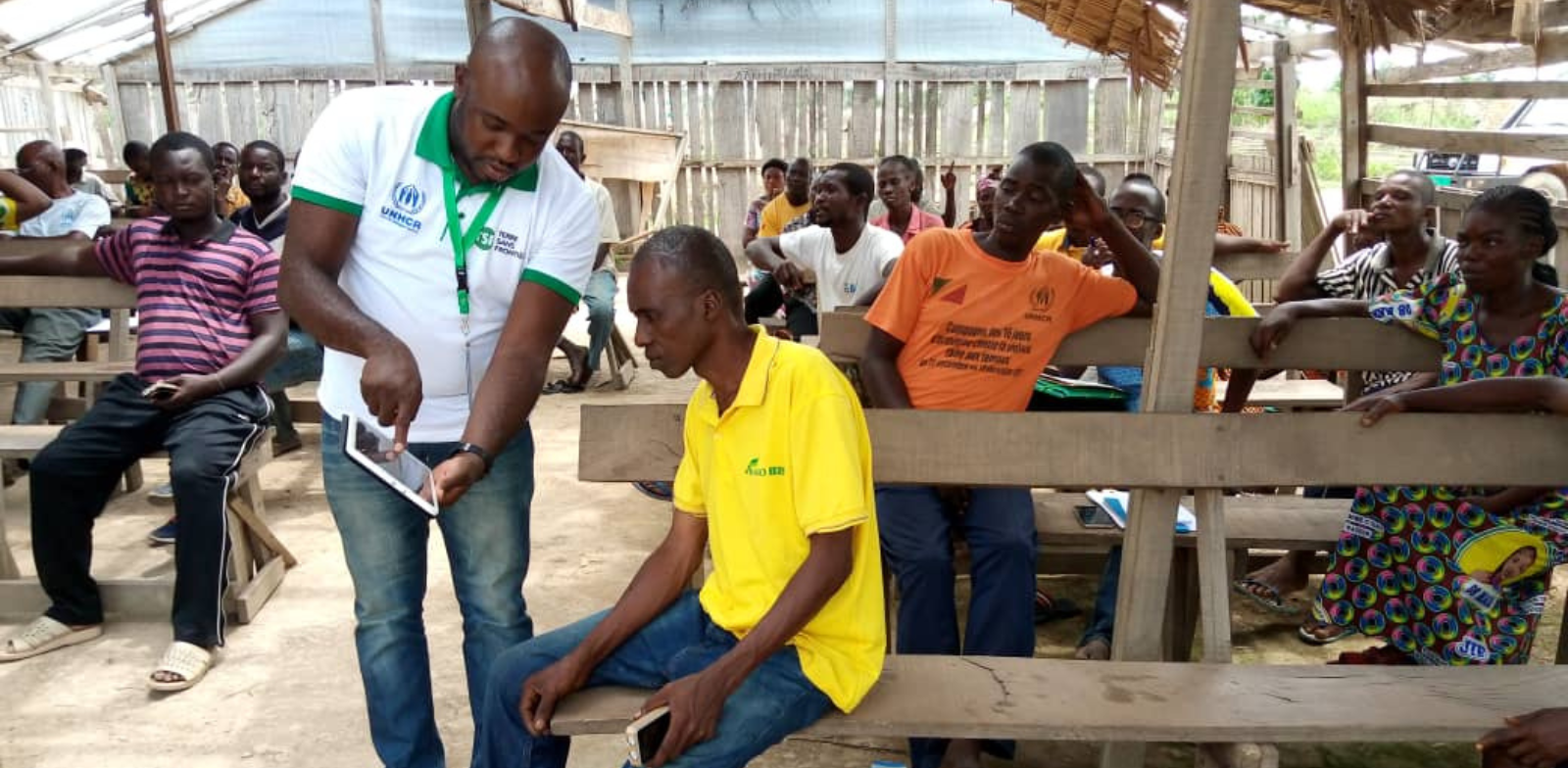
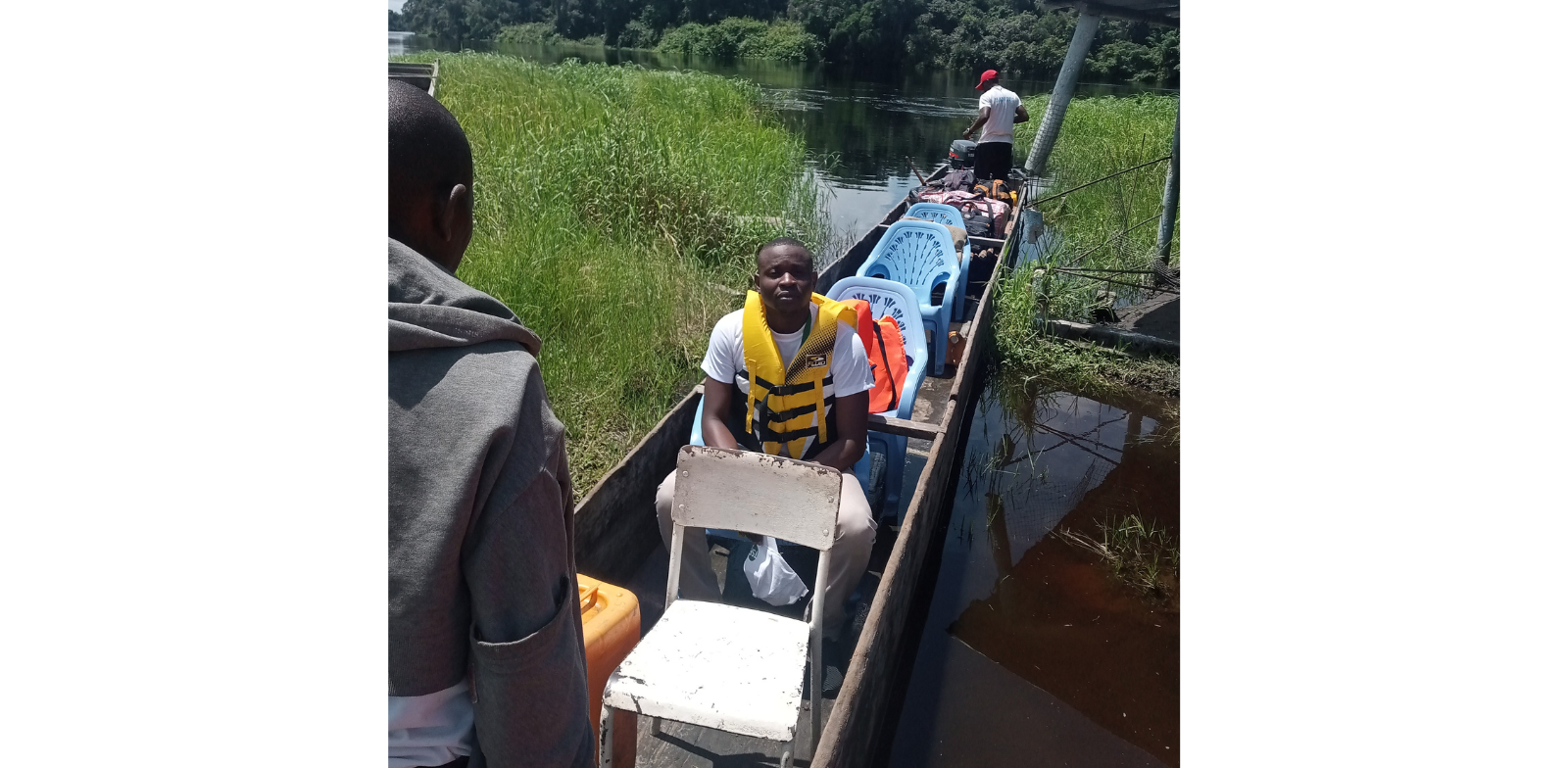
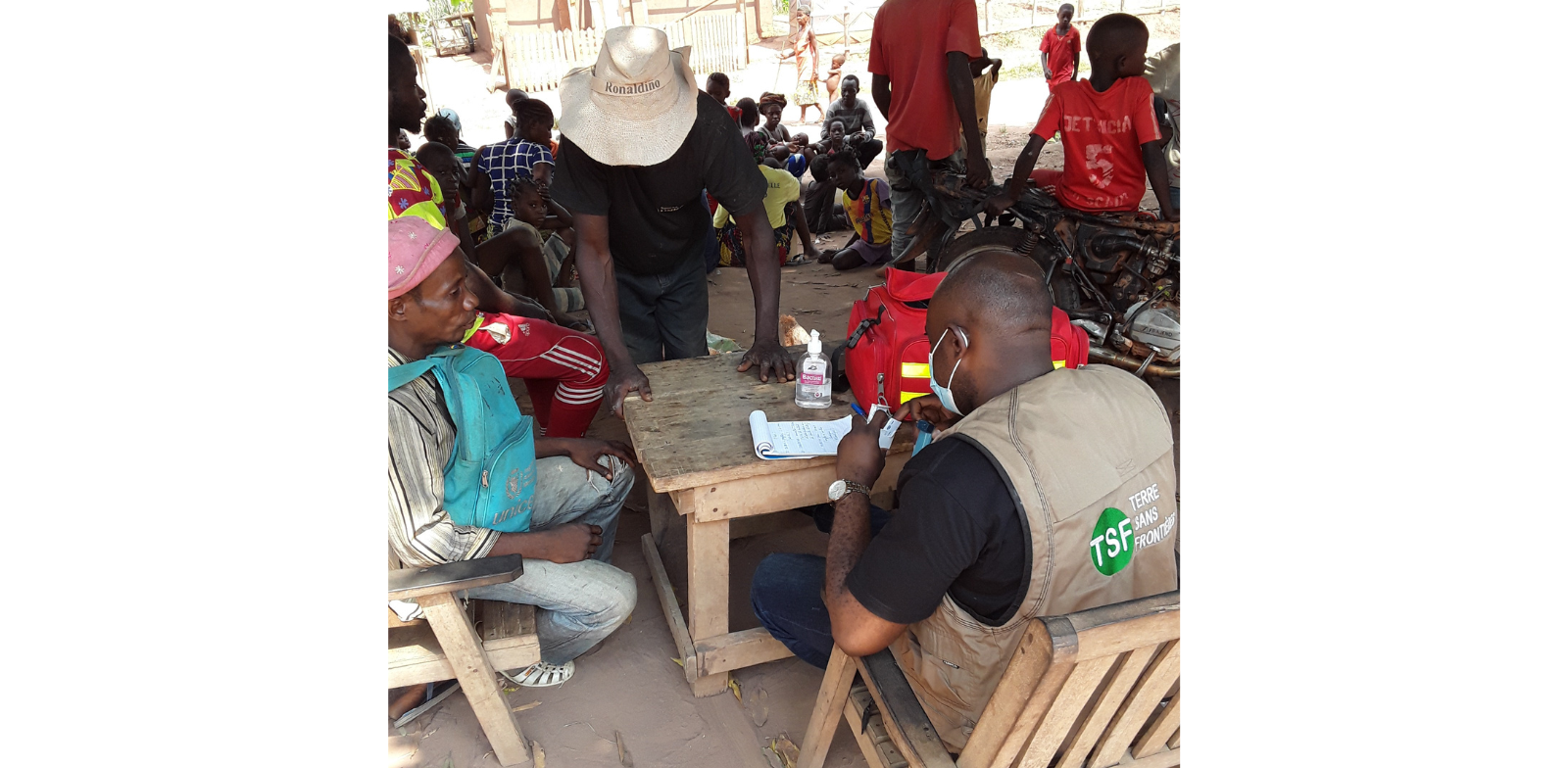
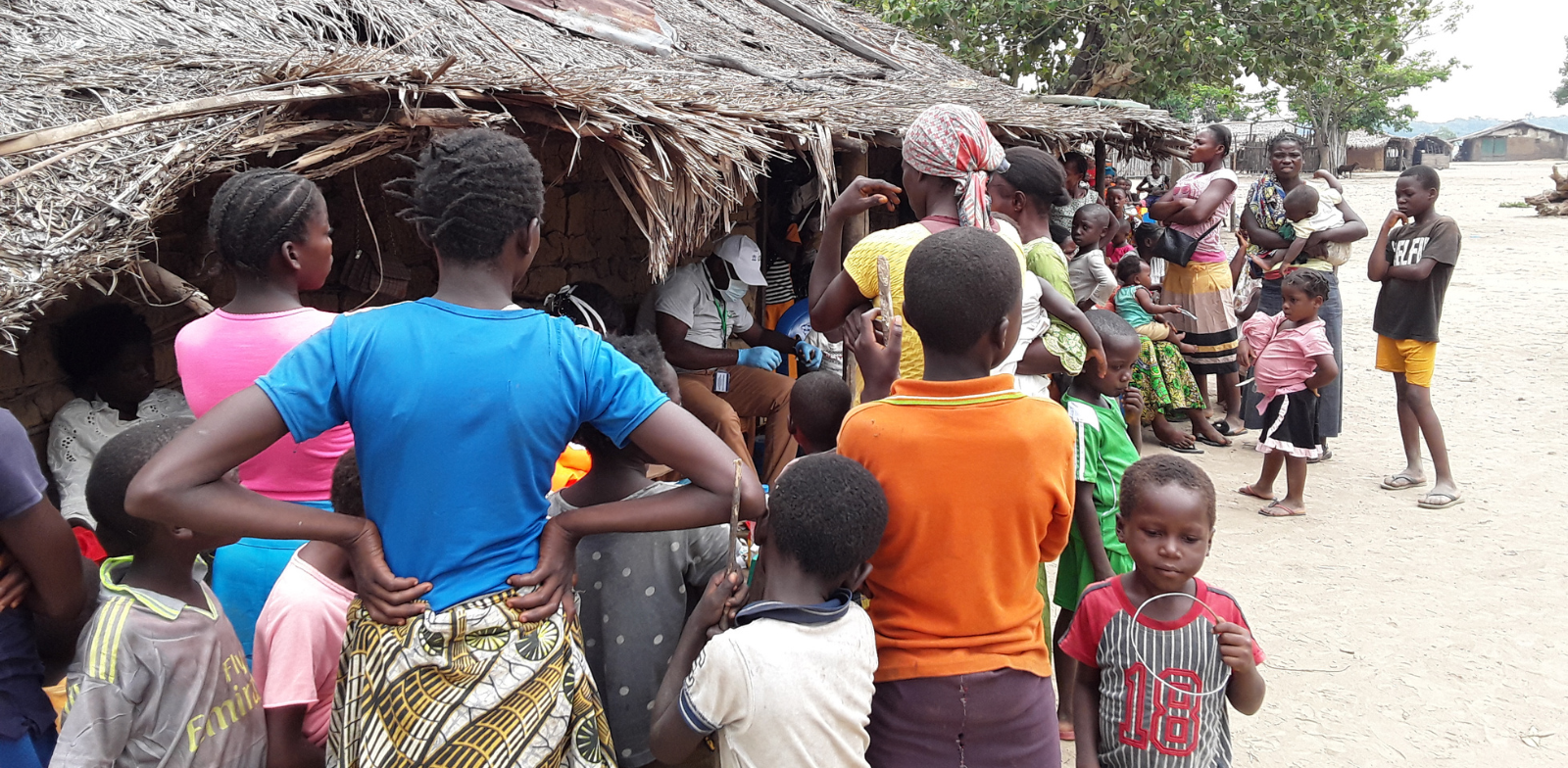
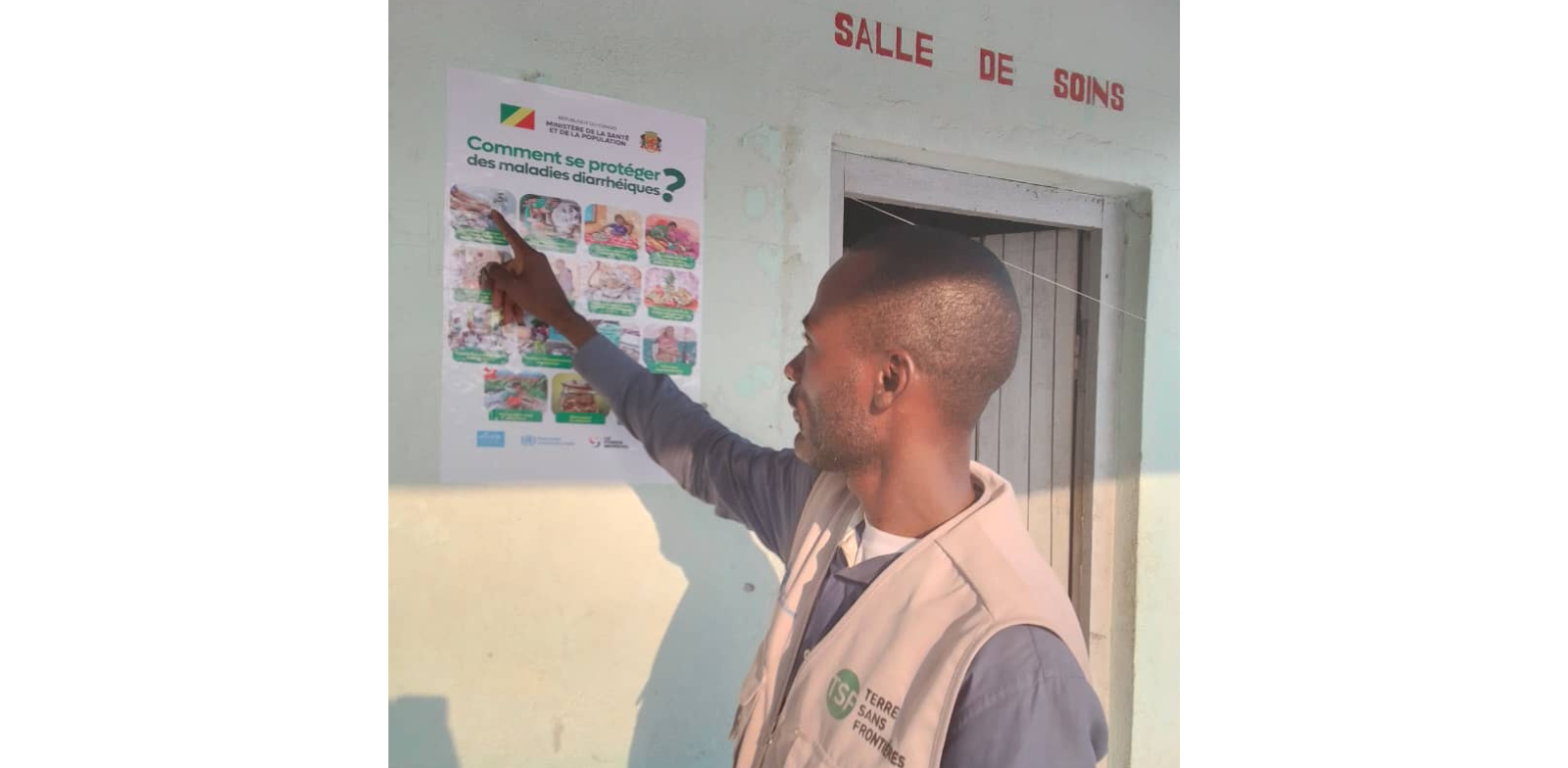
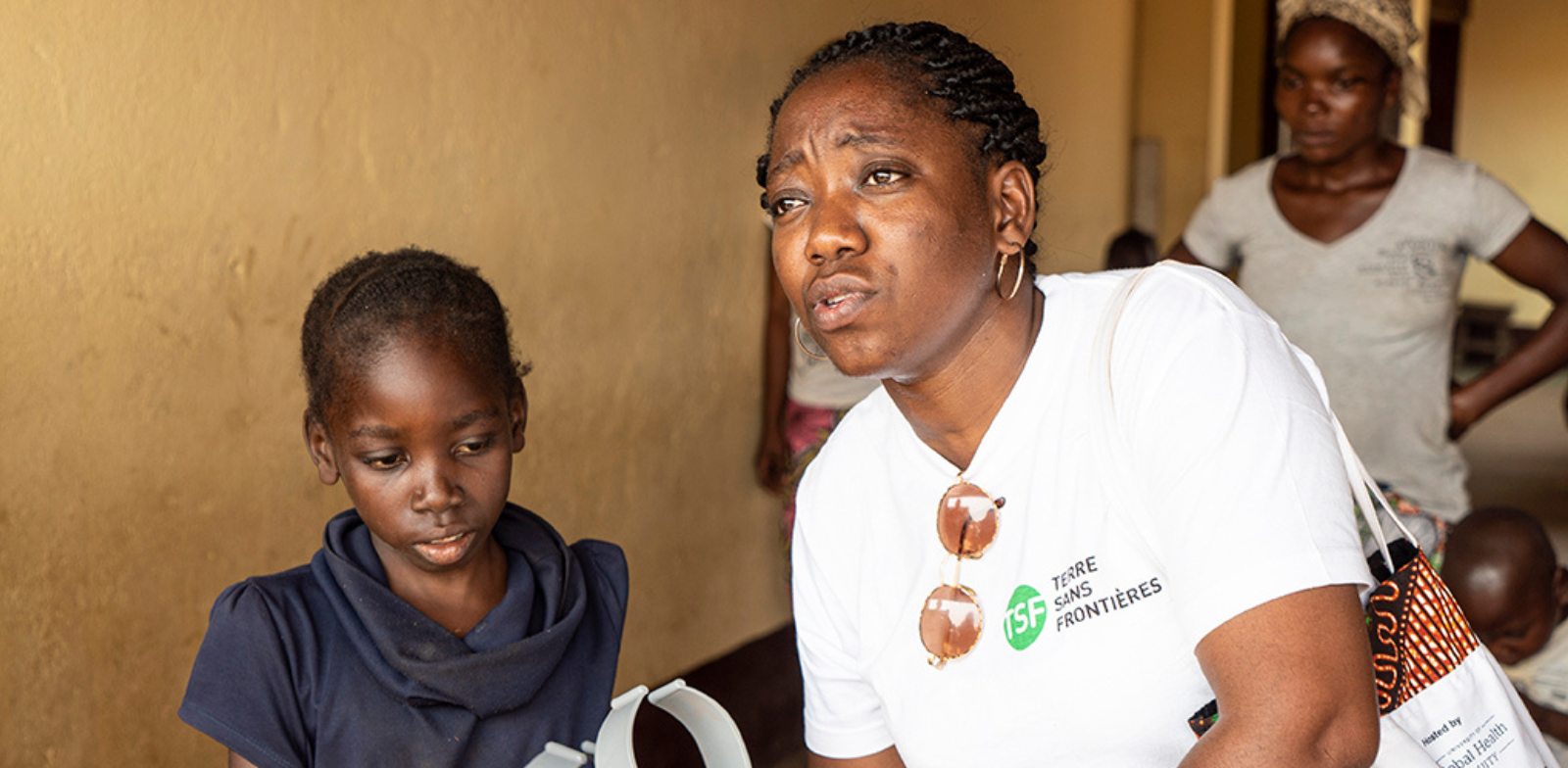
The solution, our actions
Faced with this situation of precariousness, lack of equipment and difficult distances to cover, TSF has come up with solutions that alleviate these problems in different ways.
The first essential element is to work with the local population.
‘We leave Brazzaville, we go to a corner of the country. You have to rely on people who know the terrain better,’ explains Dr Wonya. ‘When we arrive in the field, we rely on these people by giving them a little training. In turn, they go out to families and households to raise awareness and provide information. Once they’ve understood, we make sure that the general population follows suit.’
In this way, we can ensure that our actions are more effective by working with local authorities through community relays.
‘In the community relays you find heads of families, opinion leaders in the community, religious leaders. These are people who have something to say, people who, when they speak, the population immediately understands. We’re doctors, we can go into the field and say you shouldn’t wash in that water, but people won’t listen to us. But if it’s a community relay who comes and says, don’t do that, they’ll immediately obey.’
At the same time as raising social awareness, we sometimes send equipment that can greatly improve the quality of care in the region. And with this equipment comes training for local employees to ensure that it is used properly and performs more effectively.
A case in point is the ultrasound machine that has been brought to Bétou. Dr Mabiala, who was working with TSF at the time, noticed the difference immediately.
‘First of all, we had training in how to use these machines. Secondly, there was capacity-building training in the management of post-partum haemorrhage, physiotherapy and natural methods to help women prepare psychologically for childbirth. This reinforcement has made it possible to help in terms of technical facilities, and also the employees’.
These two solutions encourage a long-term vision with the idea of strengthening and building.

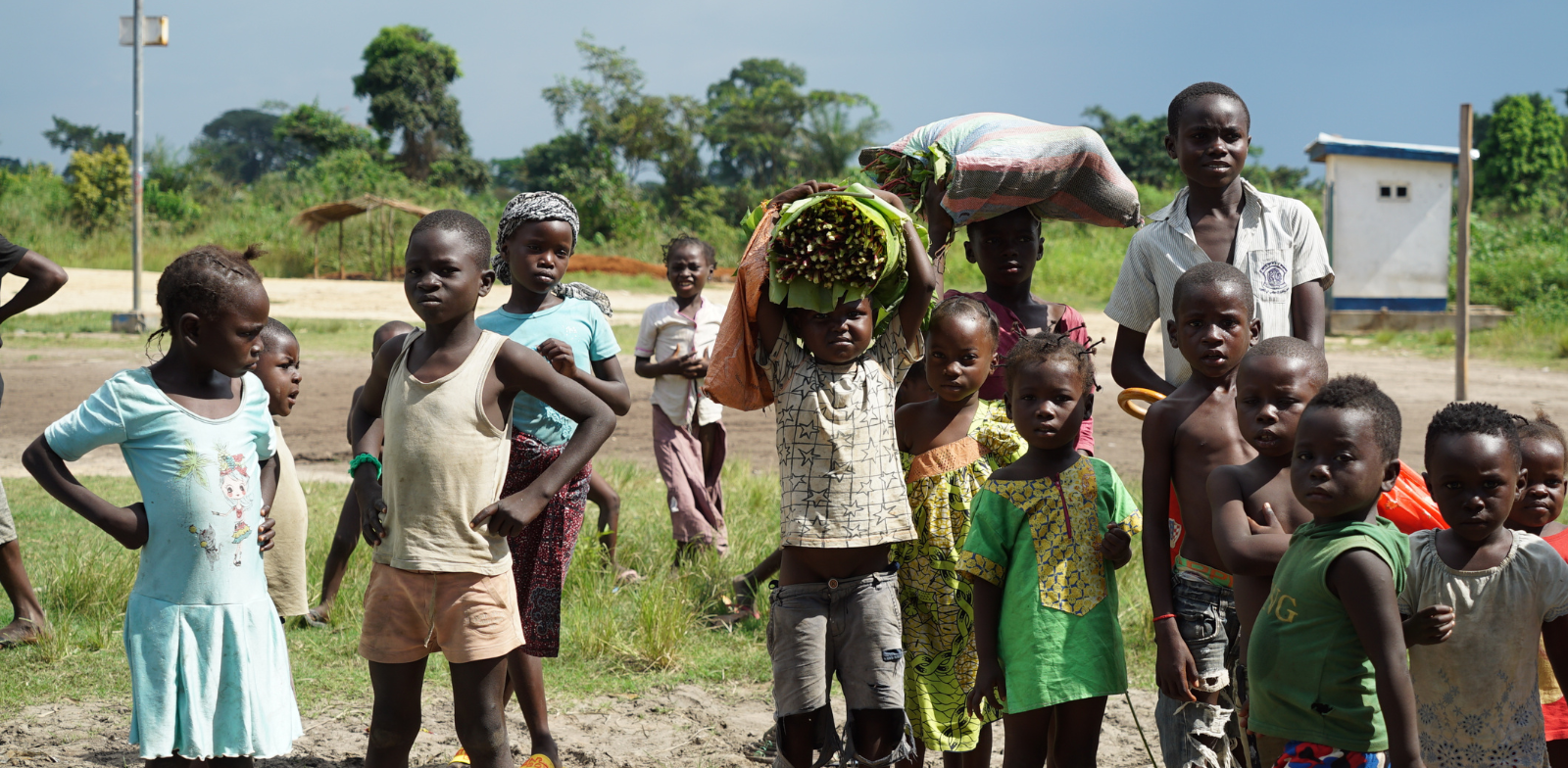
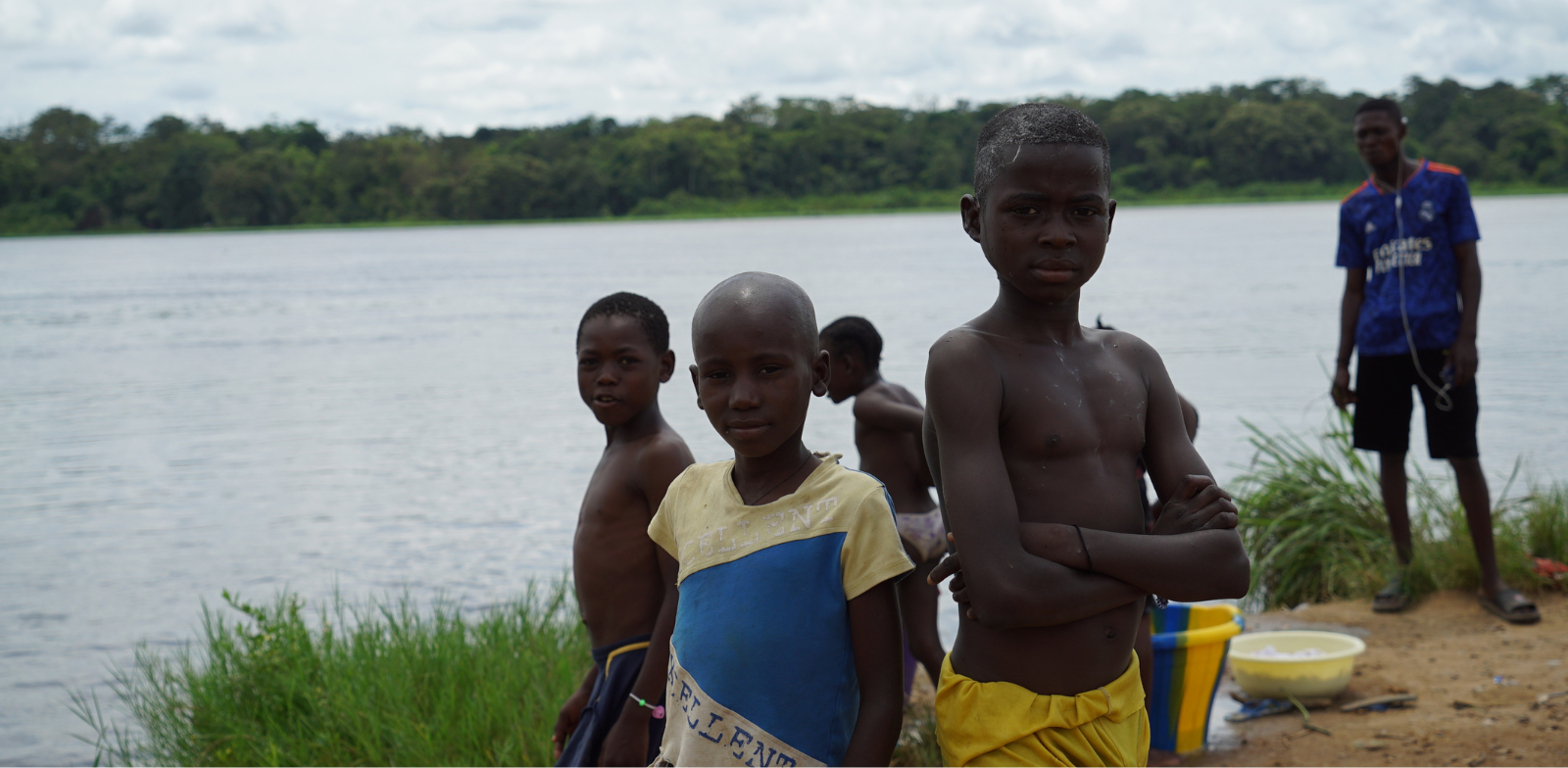
Urgency and development
In emergency situations, our teams have no choice but to respond immediately.
This was the case in the latest partnership between TSF and various United Nations agencies following the devastating floods that hit the region.
As Dr Wonya explains, we need to think about ‘a multi-sectoral response to try to bring assistance to these affected populations’.
There are several elements to the emergency response. On the one hand, there are mobile clinics where the professionals involved ‘go out and provide services in remote villages where people have no access to healthcare. They spend nights, 2 days, 3 days. And during the nights that they spend there, […] they consult people, they give medicines and they also provide prenatal care to pregnant women and at the same time vaccination to children under one year old’.
In these cases, treatment and medicines are provided free of charge. According to the doctor, this is seen as a great relief by ‘the population and all the government staff who are powerless to deal with the situation’.
Often, emergency responses also have a nutrition component, because, as the doctors explained to us, ‘it’s often in the areas after the floods that we find the greatest number of cases of malnutrition’.
When the immediate emergency has been improved, our teams can sometimes start projects with a more long-term vision, because, as the doctors explain, at TSF ‘we are aiming to reduce maternal and infant mortality, but we are still taking this approach, where we must first look for the solution in situ, i.e. try to strengthen the capacity of the structures that are on the spot, so that these structures become independent of everything, so that everything can be done on site’.
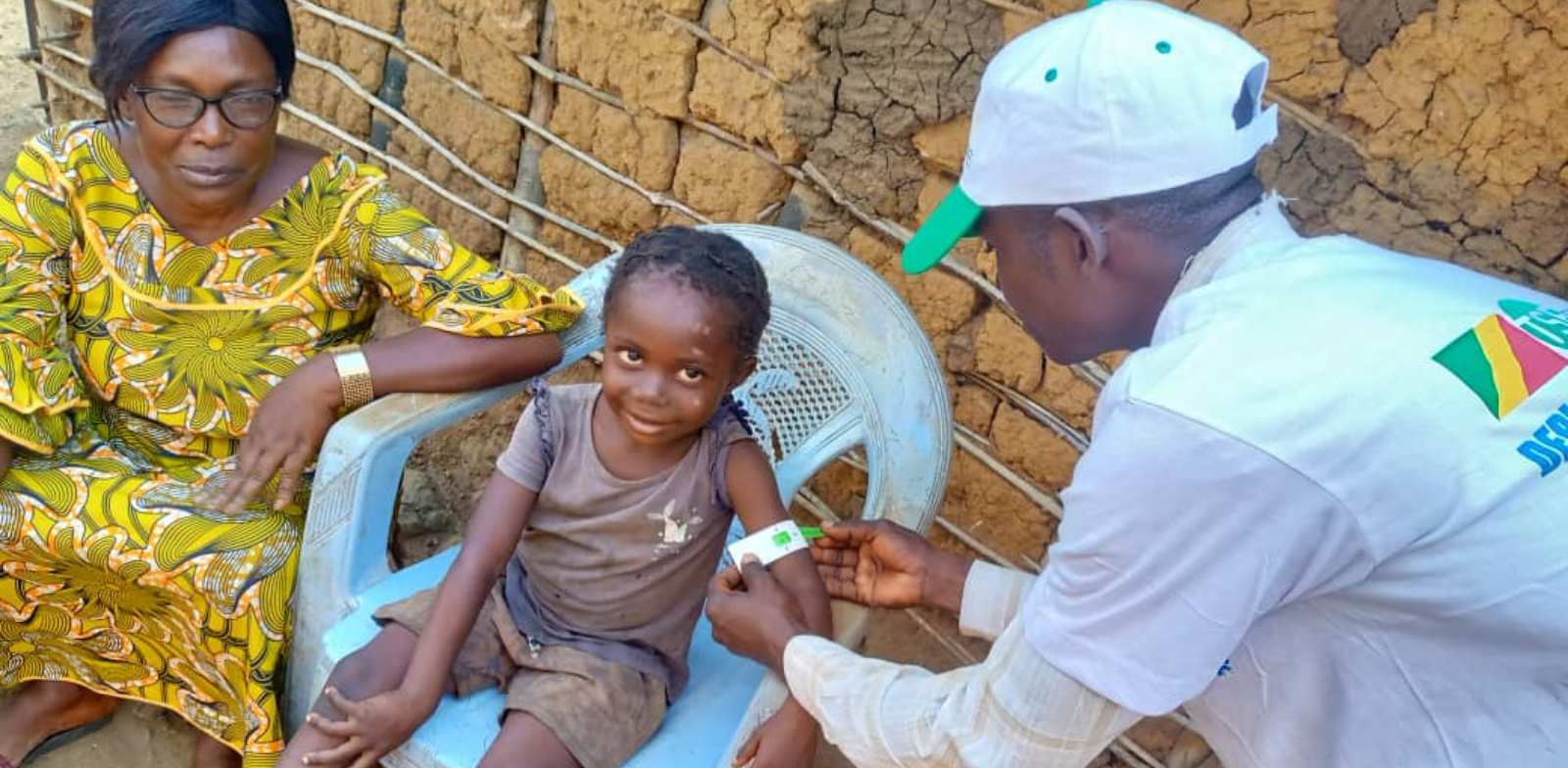
Currently, one of these projects is a partnership with the World Food Programme (WFP), where TSF is responsible for running school canteens in primary schools in remote areas.
In this region, ‘the population is very high. You can find a girl of, I’ll put it this way, 17, who may find herself with four children to support. And it’s not exactly easy to look after those children. A mother like that has to send her children to school or send them to work in the fields to have something to eat,’ explains Dr. Wonya.
The WFP’s programme consists of providing ‘food for children at school and is also a means of attracting children to school. We’re faced with destitute parents who can’t make ends meet: they have to feed their children and send them to school and, in a way, when we put food in schools, it gets the children excited. This helps to correct the indicators in terms of school absenteeism. Children want to come to school every day because they’re going to eat something.’
The programme also comes with capacity-building for teachers. Although teachers are doing the best they can with the resources they have, improving their skills will ensure that the project gets off to a better start.
‘We needed to build the capacity of teachers and members of the management committee set up by the WFP to better manage all the food supplies that are put into schools. These are people from the community who, together with the teachers, are responsible for managing the food.’
The work is carried out jointly by TSF and everyone involved in the project, from the teachers to the members of the management committee and the children’s parents.
At the end of the day, the daily life of a doctor in the Republic of Congo is extensive, both in terms of the distances travelled and the resourcefulness required of them.
It’s a vocation that changes not only the lives of our beneficiaries but also those of those who commit themselves to our mission.
After his first day at TSF, Dr Ray realised that ‘we need to put aside our egos as hospital-based clinical doctors and look much more at the public health side of things.’
This is particularly the case in the northern region of Congo, where maternal health is critical. As Dr Mabiala, who has worked with these populations, describes it: ‘Pregnant women in Bétou are extremely young, they are little girls with no experience and sometimes their bodies are not ready to have a child.’
For the TSF doctors, the health of their beneficiaries remains their priority.
And for us, too.
Our projects in the Republic of Congo
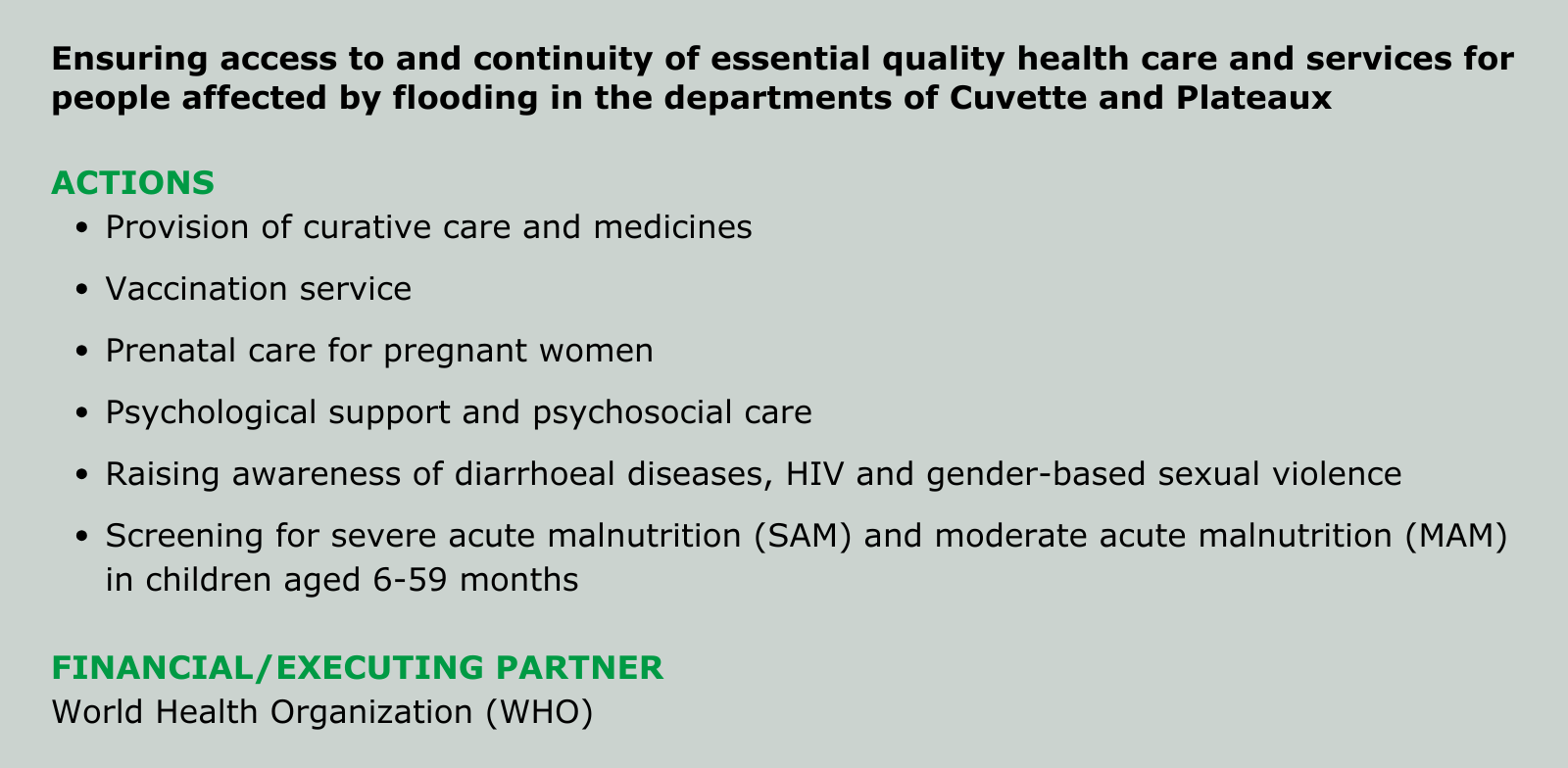
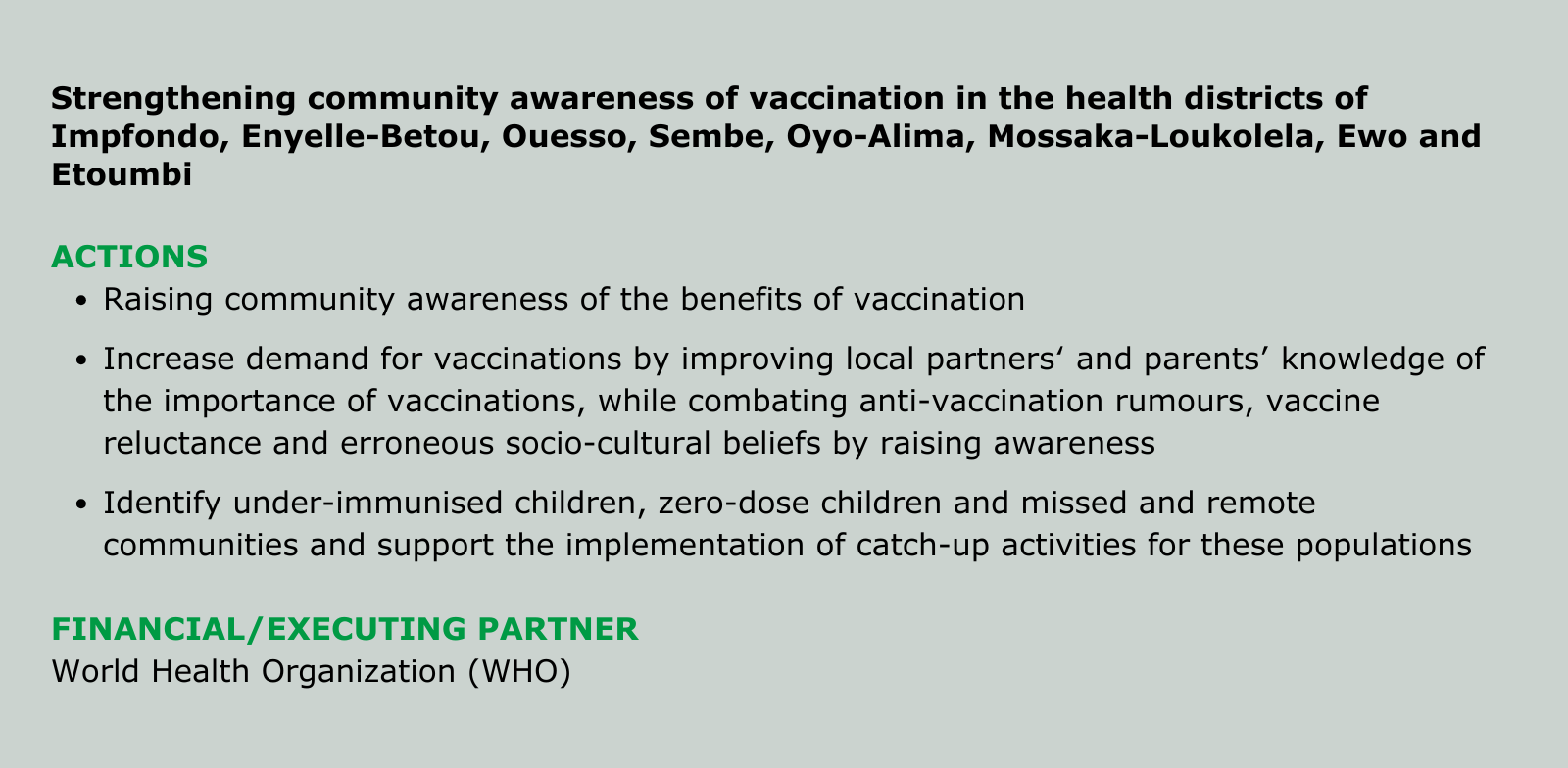
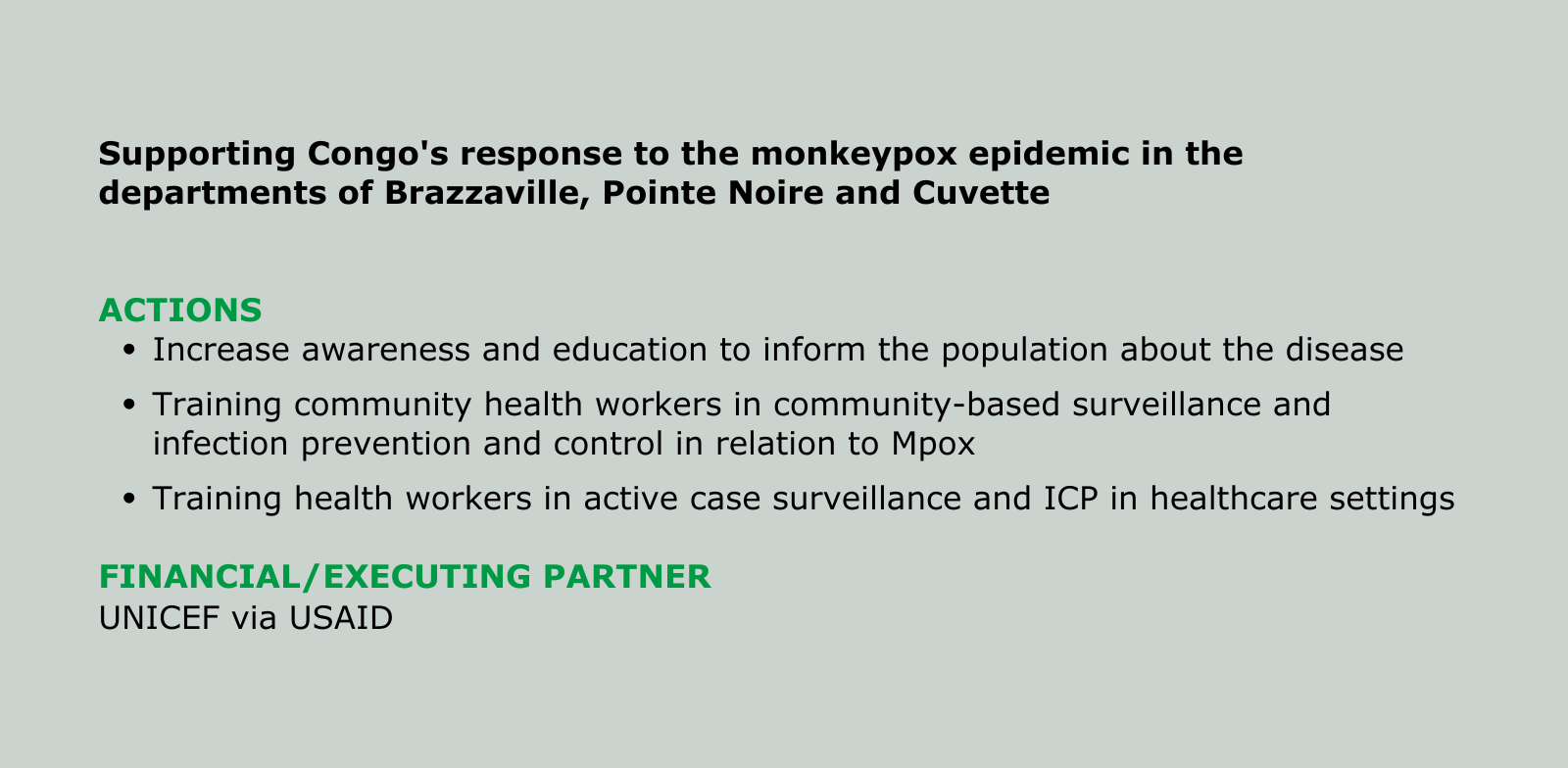
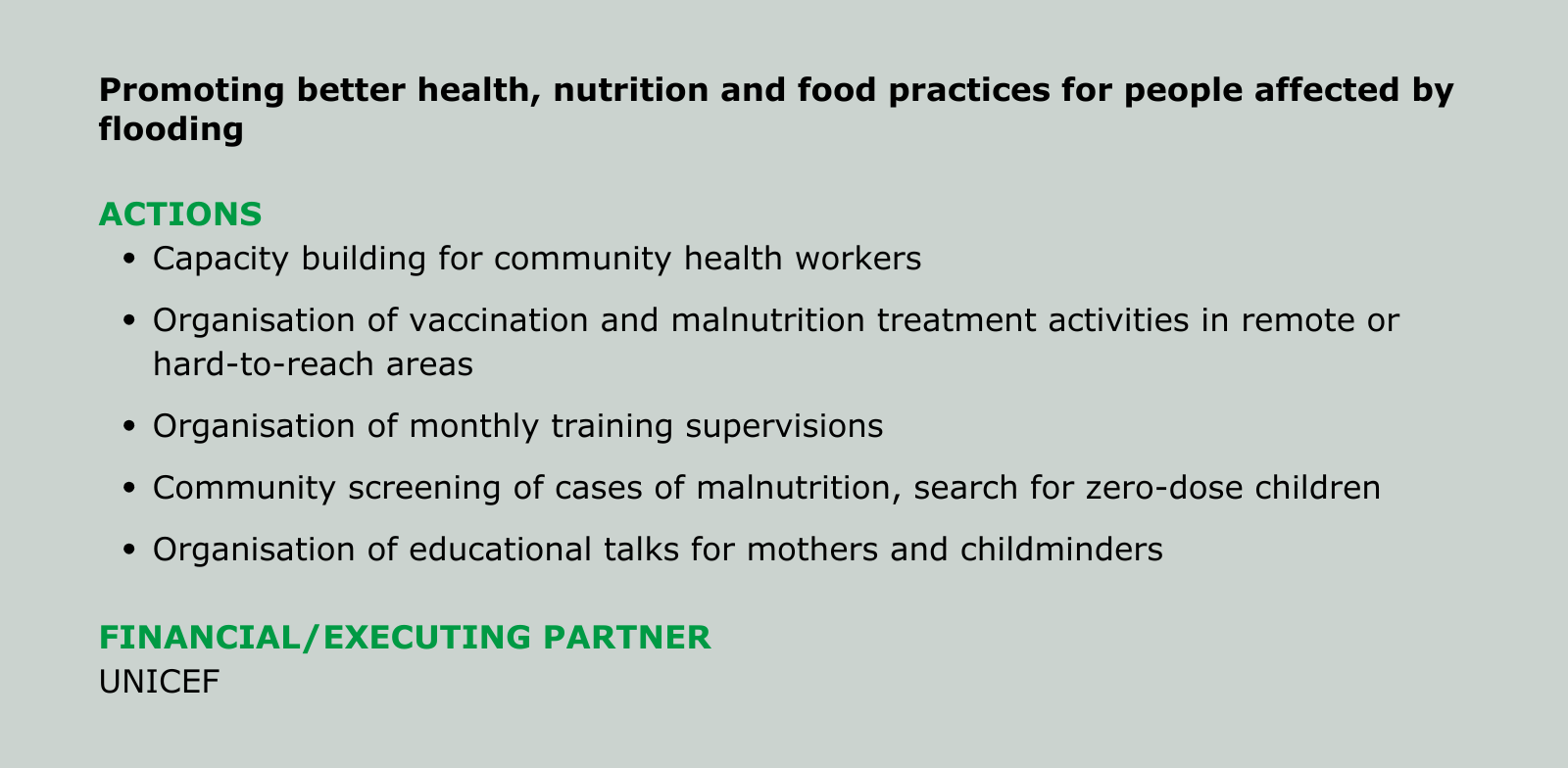
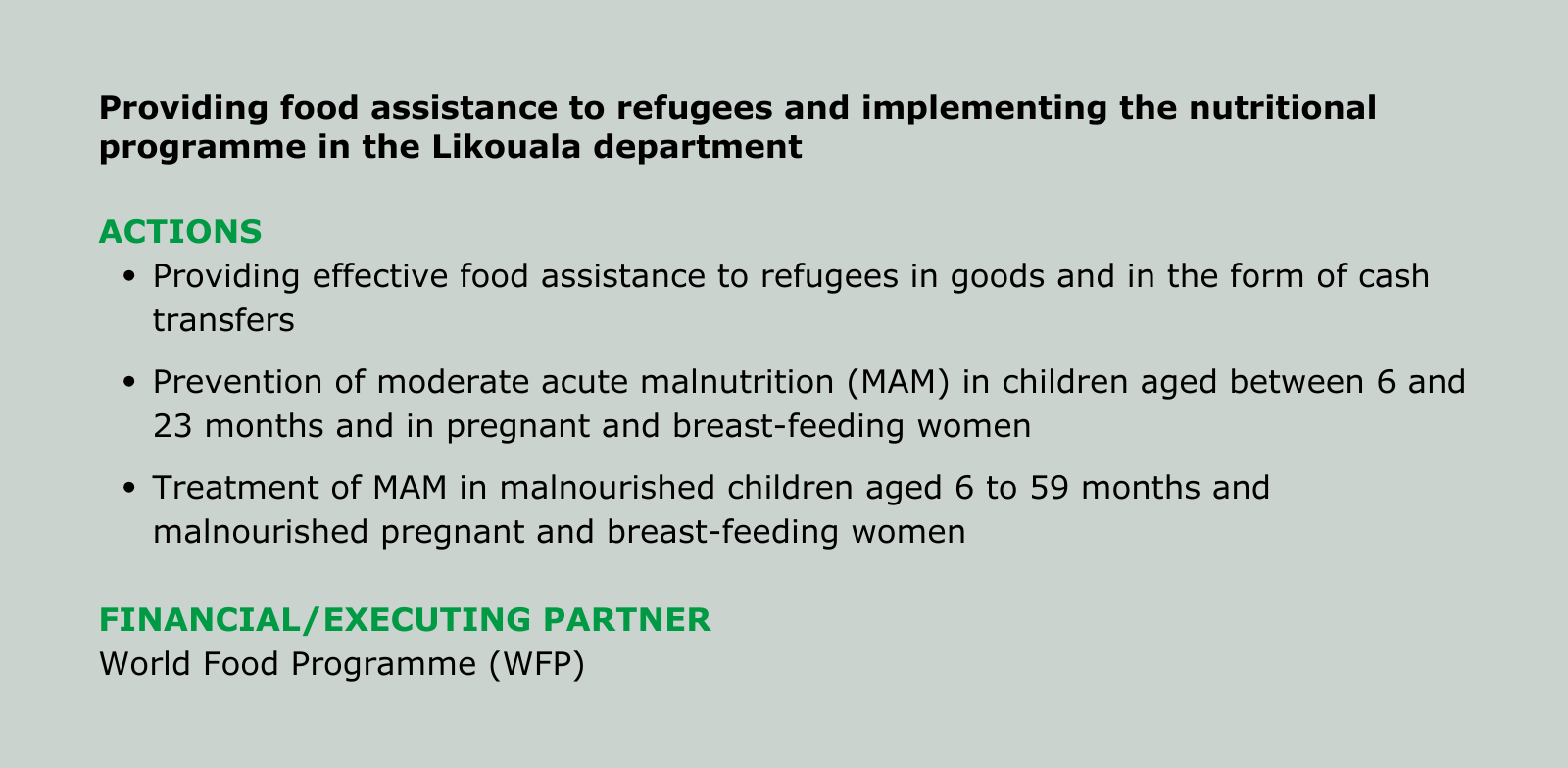
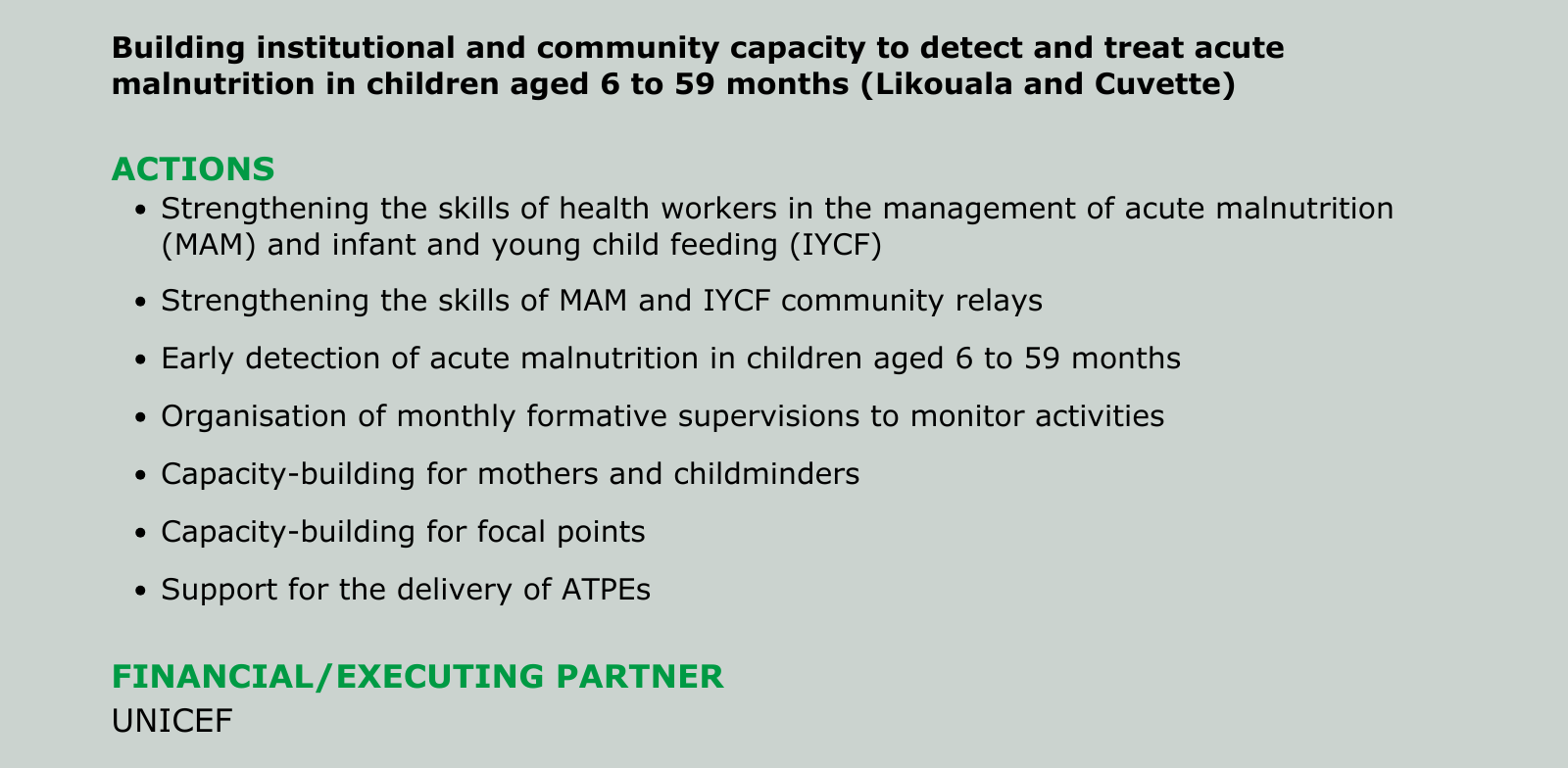
OUR PROGRAM
OUR STORIES
OUR EXPERTISE
